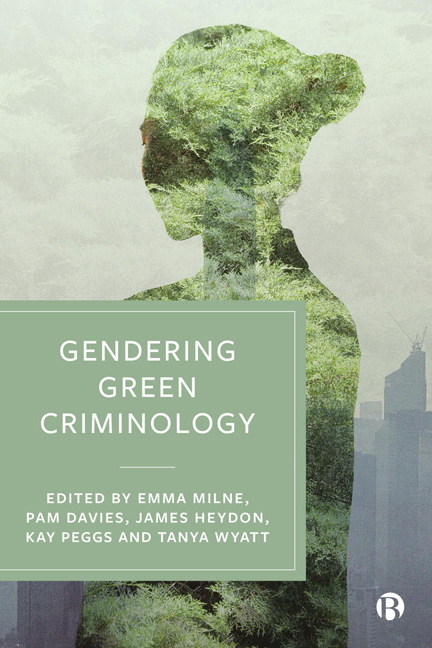5 - Reconceptualising Gendered Dimensions of Illegal Wildlife Trade in Sub-Saharan Africa through Legal, Policy and Programmatic Means
Published online by Cambridge University Press: 28 March 2024
Summary
Introduction: Overview of illegal wildlife trade
Illegal wildlife trade (IWT) refers to the unlawful, unregulated and unsustainable catch, trafficking, utilisation, acquisition and extermination of animals or plants in violation of local and international laws, conventions and treaties (Kurland et al, 2017). These crimes constitute considerable business at local, national, regional and global scales, which maximally threaten natural balance, state and individual economic stability, human health and livelihood, as well as protection of natural resources and criminal jurisprudence. According to Elliott (2007), IWT is worth 25 per cent of the global wildlife trade, which significantly poses threat to biodiversity conservation and management. It has also been reported that IWT is worth an estimated US$20 billion annually, without including the unlawful timber trade and unlawful fishing (Barber-Meyer, 2010; Wilson-Wilde, 2010), while Fison (2011) and GFI (2011) reported estimated ranges of US$7.8–10 billion and US$10–20 billion respectively each year. The WWF (2012) observed that the combination of IWT, illegal forest trade, and fishing IWT constitute the fourth largest illegal business after human trafficking, drugs and adulterated goods and products. To provide more insight into the species-specific effect of IWT, the Annual Progress Assessment (2015) reported the depletion of approximately 20 per cent of the African elephant population to 400,000 in the past decades, while 20 wild rhinos were eliminated in one year alone through rustling, according to conservationists’ estimates.
Recently, emerging issues from research have suggested the existence of gender dimensions of wildlife crime, although limited or few empirical studies have emphasised the claim. In contrast, most authors have conceptualised wildlife crime from conservationists’ perspectives (Kareiva and Marvier, 2012), without considering the relevance of crime scientists in examining and determining the multivariate complexities in wildlife crime (cf Moreto, 2015), as well as the gender dimensions of these unlawful acts. Generally, the gender concept entails the sociocultural customs or rules relating to what are appropriate for men and women in any society. These rules or customs about men and women inherently determine the demand and supply of these products, which also underpin the sociocultural values associated with their purported natural attributes or properties (FAO, 2016). In essence, it is more or less a perspective based on stereotyped customary definition or relativist conditioning of male and female roles and responsibilities, as well as their rights and privileges in any society.
- Type
- Chapter
- Information
- Gendering Green Criminology , pp. 72 - 96Publisher: Bristol University PressPrint publication year: 2023



